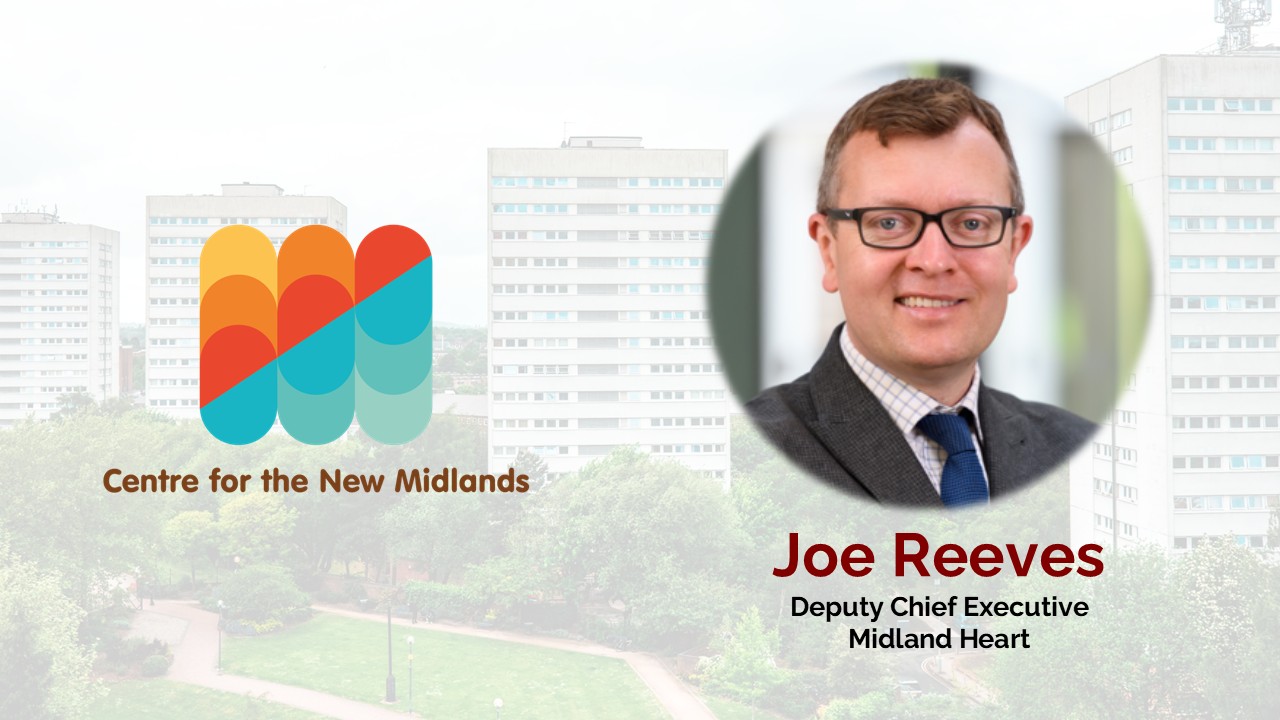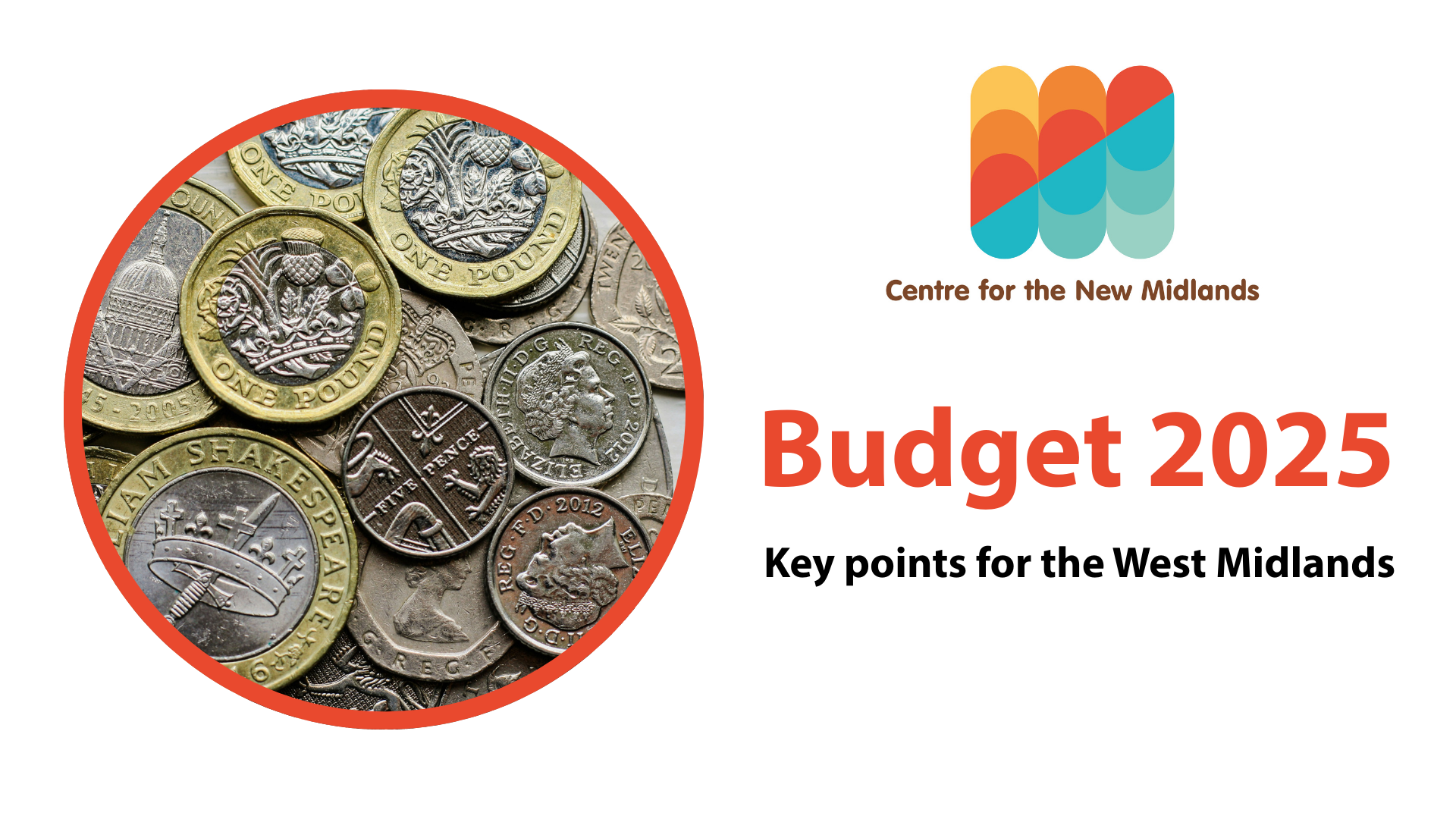On Wednesday, the Chancellor of the Exchequer declared to Parliament: “We’re turning the tide against the unacceptable housing crisis in this country with the biggest boost to social and affordable housing investment in a generation, delivering on our commitment to get Britain building. I’m proud to announce the biggest cash injection into social and affordable homes in 50 years.”
In this article, Joe Reeves (Deputy Chief Executive, Midland Heart) provides some initial reflections on what the Spending Review means for the Housing sector across the West Midlands region.
(June 2025)
Well, it feels like we’ve been waiting age for this spending review! Over a year since the general election, and we’re finally getting to find out the government’s high level spending plans for the next three years. But was it worth the wait?
The headlines are promising.
A near doubling in the size of the Affordable Homes Programme to £39 billion is obviously welcome, as is the extension of the programme to 10 years, as opposed to the usual five. It comes alongside a rent increase formula for social housing of the Consumer Price Index (CPI) +1% for a decade. Again, this is welcome, and the extension to 10 years instead of five will provide housing associations with the stability they need to plan their investment effectively.
The announcement on a consultation for a return for ‘target rent’ for social housing through convergence also demonstrates that the sector’s voice has been heard, catching up foregone rental income. For the uninitiated, the government has a formula for setting social rents. This is used on new homes as they are built and let, but existing rents are increased by a different formula, usually the previous September’s CPI+1% (rents are increased from April). This is done to protect social renters from sudden, significant rent increases. However, it means that many social homes have fallen behind the ‘target rent’, if the rent formula were used. Rent convergence would mean increasing rents at a higher rate than CPI+1% to return social rents to where they would otherwise be. Let us also not forget the rent decrease of 1% per annum between 2016 and 2020, and & 7% rent cap in 2024, when general inflation was running at 11%.
Convergence also has a second purpose. Many social rents have started from a different base, meaning that two households may be living in the same area, in a similar home, but paying very different rents. This is particularly an issue between housing association and council rents, as council rents often started from a lower base. A previous attempt to converge rents ended in 2015. Rent convergence would close this gap. Returning all rents to target would provide a significant cash injection into the sector, shoring up accounts and enabling development.
So, at first glance the Comprehensive Spending Review statement is a landmark moment for affordable housing in the West Midlands. It is offering a decade of stability and investment that gives housing associations, their developer and funding partners the confidence to improve and build homes at scale.
However, the devil will be in the detail – isn’t it always?
Firstly, we should properly acknowledge that the Affordable Homes Programme funds the building of social, affordable (up to 80% of market rent) and shared ownership homes. So, the whole £39 billion will not be spent solely on social rent and the Government wishes to support people into home ownership. Whilst we need as much social housing as possible, it’s also important to acknowledge that in a region as large and diverse as the West Midlands, all tenures have their place in the market. The mix of social, affordable and shared ownership needs to be the right one. A clear role for the Combined Authority has it gears up to produce new spatial development plans.
On that point, social rent requires a higher rate of subsidy than affordable rent, as the rents are lower, so the up-front subsidy needs to be higher. The government has committed to, what they admit, is a stretching target of building 1.5 million homes by the end of the Parliament. In the race for numbers, we need to make sure that enough social housing is built, rather than the focus being on numbers rather than need.
It will also mean that housing associations will need to leverage funding against the grant to deliver the homes. This will mean that the sector will need to borrow in the region of £50bn over the next ten years after taking account of any receipts from shared ownership sales. These are huge sums and the interest cover for many housing associations is already under strain. The sector will need to think carefully as to how it is able to absorb the debt required to deliver these homes.
On rent convergence too, we have work to do. The government has committed to consulting on the best way to make this work. So, we need to come up with a plan that meets the government’s aim, whilst also remembering that we are serving households with low incomes.
Overall, this has been a positive review for housing in the region. The significant increase in the Affordable Homes Programme (AHP), clarity over social rent increases and the opportunity for rent convergence should all be well received. On the first of these, the Mayor is expected to have significant devolved strategic and financial responsibility to deliver his aspiration of building 20,000 social homes over the next decade.
The combination of the increased AHP, guarantee of CPI+1% rent increases and potential for rent convergence will also enable the region’s housing associations to leverage in additional private funding. Historically, the index linking of social rents and government backing of the sector has made it very attractive to investors. It’s no secret lending rates have increased, where five years ago the sector was borrowing at 2%, we’re now closer to 5.5%-6.0%. Indeed 30 year gilts rates in the UK are now hovering around 5.2%. The sector will need to think carefully as to how it is able to absorb the debt required to deliver these homes. Indeed I expect that to build the homes required, it will require endeavour from all parts of the housing sector, housing associations will play a big part but I also expect new ventures such as the for profit registered providers to make a sizeable contribution too.
Whilst there is work to do and things to be watchful for, we should cheer the announcements in the review and look forward with optimism to what we will be able to do as a result.
This is a personal blog post. Any opinions, findings, and conclusion or recommendations expressed in this article are those of the authors and do not necessarily reflect the view of the Centre for the New Midlands or any of our associated organisations/individuals.
ABOUT OUR AUTHOR:
Joe Reeves is the Deputy Chief Executive of Midland Heart, a housing association with over 34,000 homes and a simple mission to provide quality affordable housing across the Midlands. Joe joined the Executive in July 2013 following 15 years at PwC working in both the public sector audit and advisory and as a Director in the corporate finance government and infrastructure team. As a Director of pwc, he acted as lead commercial advisor on major economic and social infrastructure public private partnership projects for Government across the UK with a combined value of £1.5bn.
Joe is responsible for the growth strategy of Midland Heart having delivered over 4,000 homes of new build development and stock acquisitions over the past five years and is the Executive lead for Finance and Treasury maintaining a sector leading credit rating of A1 (Stable). Joe is also responsible for the corporate affairs brief working closely with Government, nationally, regionally and locally. Joe is on the Executive of the West Midlands Housing Association Partnership and recently spearheaded a new venture called Homes for the West Midlands LLP, a collaboration between regional based housing associations and the West Midlands Combined Authority to deliver additional affordable homes.








